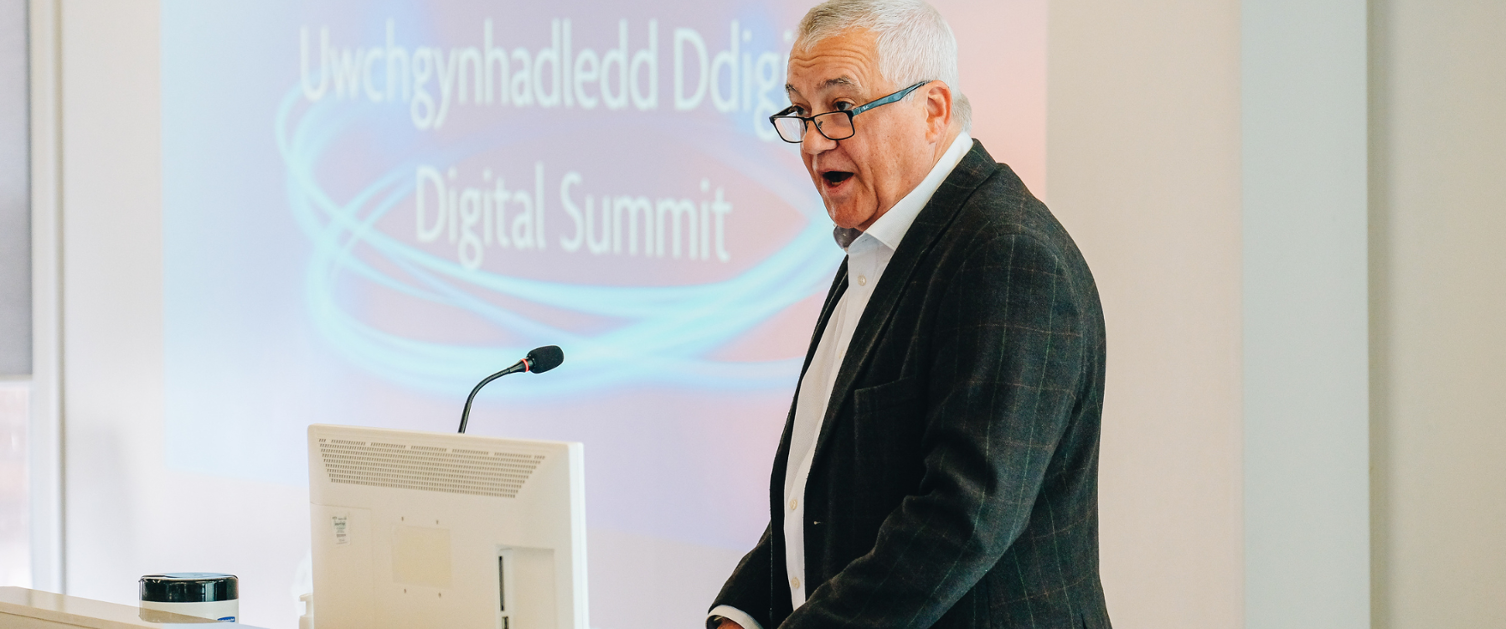Chair's Blog: Reflections on the Digital Summit

6 October 2022
Simon Jones, Chair of Digital Health and Care Wales
Last week we co-hosted with Cwmpas and the Wales Council for Voluntary Action a digital summit which explored how the public sector working with and through the voluntary sector can much better deliver inclusion in digital innovation.
I have been reflecting on some key messages and issues that shone out for me.
First, and perhaps obviously, there are a significant number of people who do not have access to the internet most notably older people who are also those who ‘consume’ more health and care services than the rest of the population. Heléna Herklots, the Older People’s Commissioner for Wales, set the challenge that no new digital development should disadvantage those who did not want or were not able to use it.
This was powerfully endorsed by Huw Owen of the Alzheimer’s Society who suggested that people should have a right to choose between accessing care and support digitally or not and that there must be an equity of outcome regardless of their choice.
Less obviously, Arielle Tye of Promo Cymru described to us work she had done with a group of sixth formers developing a digital application to provide access to sexual health advice and support. A group of people you would expect to be very digitally savvy and well used to getting information and advice digitally. Yet all this group failed to pick up on a key piece of information that was digitally provided. The lesson, design of a digital interface is as critically important for those who are huge consumers of digital content as it is for those who are not and the outcome of it not being carefully designed is the same for both.
User centred design of digital applications was a theme running through the Summit with Myra Hunt of the Centre for Digital Public Services taking us through some critical characteristics of a well designed digital service that has users at the heart of it. A theme echoed by Scott Tandy of Newydd Housing Association who told us how an NHS Wales ‘digital hack’ had helped him find a solution to older tenants accessing a wide range of activities and support using their TVs with a simple device added. The lesson, not all digital solutions are complex and huge opportunities are there by bolting a digital element onto other devices that people are very comfortable and confident in using.
In presenting specific initiatives and innovative digital applications our voluntary sector colleagues demonstrated, amongst many other things, one obvious common characteristic. The solutions need not be very expensive. Marc Davies and Jenny Phillips from Cwmpas, told the audience about a project they ran using a relatively small amount of Welsh government money which, through small individual investments in digital kit, enabled people to access a whole range of support, advice and family and friends contact that they would not otherwise have been able to do.
The success of these relatively small and inexpensive digital innovations and solutions raised a fundamental challenge that is all too often common; how does this type of best practice find its way in to mainstream programmes and, even more important, attract sustainable funding beyond project funding.
Sally Lewis of the Centre for Value in Health focussed our attention on another important aspect of the digital revolution in health and how to ensure inclusivity. Clinicians, whatever their role, need to be fully engaged in digital developments whilst at the same time being confident that human interaction which remains at the heart of their professional services is in no way compromised or side-lined by new digital interventions in the relationship between them and their and patients.
To date much of the digital innovation in health and care has been designed to support health professionals in how they provide services to people and patients. Matt Cornish of who leads on the development of the NHS Wales App in Digital Health and Care told us how this was all about to change with the launch of the App over the coming months. He described the efforts being made to achieve the greatest possible user engagement and a recognition that there can’t be a ‘job done’ approach as there will always be more that can be done to achieve inclusivity.
This was picked up on in the panel session at the end of the Summit both in relation to particular groups of people who share a characteristic such as sight impairment and more widely. The panel also explored how to manage the big change being driven by digital development, how to put users at the heart of services, the complexity of making sure new developments work with existing digital systems and how addressing culture change goes to the core of successful change based on digital innovation.
In introducing the Summit I told people about my personal ambitions and ambitions for DHCW and the small part I hoped I could play in not creating a post digital revolution second inverse care law – that those who need care and support most are those that get the poorer access.
We need to move our thinking from trying to avoid the unintended consequence of digital innovation creating greater exclusion to one which is built on the intended consequence of digital innovation leading to greater inclusivity.